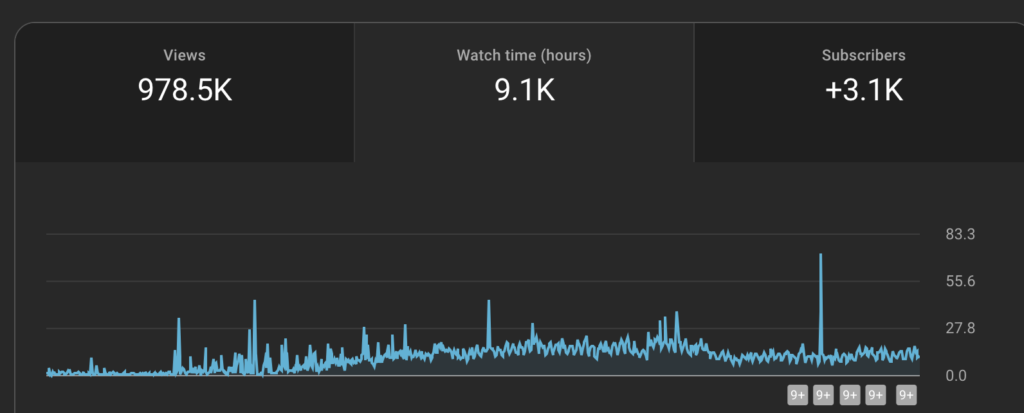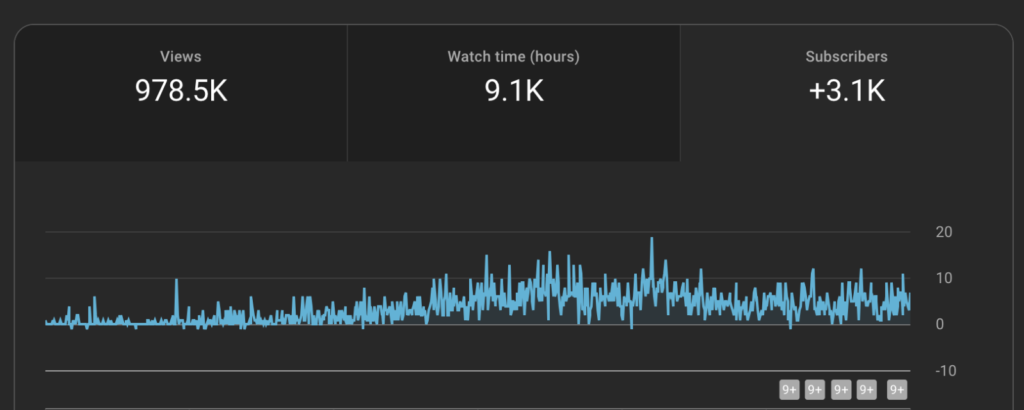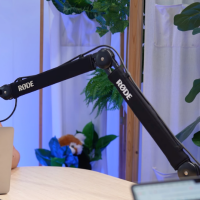You’ve probably heard all the hype about YouTube, TikTok, and Instagram Reels, but you’re still wondering: Is video marketing really worth the time and effort? Maybe you’ve dabbled with a few videos, only to be disappointed with the number of views, subscribers, or engagement. It can feel like an uphill battle, especially when the internet is flooded with content. So, is video marketing worth it, and if it is, what’s the right way to do it?
Here’s what we discovered after tripling our YouTube subscriber count, generating over 12,700 hours (about 1.5 years) of watch time, and over 1 million views in total: it’s worth it, but only if you know how to work with the platform’s strengths.

In this article, you’ll learn the exact tactics we used to drive rapid growth, and more importantly, how you can replicate them.
Following YouTube Shorts Trends for Fast Subscriber Growth
One of the most effective strategies we discovered to increase views and watch time, and ultimately subscribers, was YouTube Shorts.
If you’re unfamiliar, YouTube Shorts is the platform’s answer to TikTok – short, vertical videos that last up to 60 seconds. What makes Shorts so powerful is the way YouTube’s algorithm prioritises them.
When a video aligns with trending topics or viral content, it has the potential to get a massive number of views in a short time, reaching audiences that may never have found your regular, longer videos.
Here’s an example of a Short we released which hit almost 300,000 views:
We noticed that when we leaned into trends, we saw an immediate spike in views and subscribers, and that spike usually trickled into more subscribers over time, having a lasting impact. This also had a massive impact on channel watch time as one short was played many times over. This sends a positive signal to YouTube about our channel and helps us reach more users in general.
But it’s not just about hopping on any trend. You need to ensure the trend aligns with your brand and audience. The sweet spot is when you can create content that rides the wave of a trend but still delivers value or entertainment to your target viewers. When done right, trending Shorts can become a growth engine, pushing your channel in front of a larger audience.
Key takeaway:
Following YouTube Shorts trends can significantly accelerate your subscriber growth by boosting visibility. The trick is to jump on the right trends that align with your brand and resonate with your audience.
Why Short-Form Content Works for Engagement and Growth
Short-form content, particularly YouTube Shorts, isn’t just a trend – it’s a proven driver of engagement and growth. We discovered this firsthand when our subscriber count started to incrementally incrase after focusing on Shorts.
The reason is simple: YouTube’s algorithm favours content that keeps users on the platform, and Shorts have a unique ability to do just that.
YouTube Shorts offer bite-sized, easily consumable videos that viewers can quickly watch and scroll through, creating a loop of continuous engagement. This “snackable” content keeps viewers coming back for more, and the more time they spend engaging with your content, the more YouTube pushes your videos to a wider audience.
Another reason Shorts are so effective is their potential to go viral. Unlike longer videos, Shorts have a higher likelihood of being recommended to new viewers, even those who haven’t interacted with your channel before. In our experience, a well-performing Short can achieve more views in a few hours than a regular video might get in weeks or months. This surge in visibility directly translates into more subscribers, and more importantly, long-term engagement.
Key takeaway:
Short-form content works because it’s easy to consume and highly engaging. YouTube’s algorithm rewards this by pushing Shorts to a broader audience, driving exponential growth in both views and subscribers.
How Posting More Videos Led to Explosive Growth
When it comes to video marketing, consistency is everything. We found that one of the biggest drivers of our growth on YouTube was simply showing up regularly. In the early stages, we posted sporadically, hoping each video would gain traction on its own. It wasn’t until we committed to a consistent posting schedule – especially with YouTube Shorts – that we saw consistent growth.
In the graph below, you’ll see how over time as we started posting consistently, we saw a general increase in watch time:

Similarly, when we look at subscriber growth during the same period, we can see that the number of subscribers per day increases by almost 10x compared to earlier periods:

YouTube favours channels that consistently publish content. The more you upload, the more chances you give the algorithm to promote your videos to new audiences.
Regular uploads also signal to your existing subscribers that you’re active, keeping your audience engaged and coming back for more.
We experienced this firsthand as you can see from the graphs above. When we started posting Shorts daily, our subscriber count increased consistently, as did our watch time and views.
We saw continuous growth rather than the occasional spike.
Quantity vs Quality
So, should you care more about quantity than quality?
Quality is important. If your videos aren’t good in the first place, YouTube won’t prioritise them. But they don’t have to be perfect.
Focus on producing high-quality videos that answer user’s questions and ride on trends, and try to post one Short daily, and you’ll likely experience a rapid growth surge.
That said, consistency isn’t just about uploading more; it’s about doing so on a regular schedule. Whether it’s daily, weekly, or bi-weekly, sticking to a routine keeps you top-of-mind for your audience and signals to YouTube that your channel is active and worth recommending.
Key takeaway:
Consistency and volume go hand in hand when it comes to growth on YouTube. Posting more content increases your visibility and gives you more chances to catch the algorithm’s attention, leading to sustained, explosive growth.
Does CTR (Click-Through Rate) Really Matter?
Getting views on your videos is a critical part of YouTube success, but before viewers can watch your content, they need to click on it first. That’s where CTR (Click-Through Rate) comes in.
CTR measures the percentage of people who see your video’s thumbnail and title and decide to click on it. We quickly learned that even if we produced great videos, it wouldn’t matter if no one clicked to watch them.
You might be thinking, ‘does this apply to Shorts?’
It turns out that you can now upload thumbnails to Shorts, which demonstrates the importance YouTube places on CTR, even with short form content.
So, what can you do to get it right?
Focus on Thumbnails and Titles
The most important elements for driving a high CTR are your video’s thumbnail and title. Think of these as the packaging of your content. If your thumbnail is eye-catching and your title piques curiosity, viewers are much more likely to click.
On the flip side, even the best content will go unnoticed if the thumbnail and title fail to stand out in a sea of videos.
Adding bold text to thumbnails or using faces with strong emotions may significantly boost your CTR. Similarly, crafting titles that create intrigue or promise a solution (without clickbaiting) may make a noticeable difference in how often people click.
A/B Testing
One of the strategies you can implement is thumbnail A/B testing. YouTube has a feature when uploading videos, which lets you run a split test to find which thumbnail works best.
Try to test different designs to find out what impacts CTR for your content and audience the most, and then use those findings to improve your efforts from there.

Key takeaway:
CTR is critical to getting views. A well-designed thumbnail and a compelling title are essential to grabbing attention, and A/B testing can help you refine your approach to maximise clicks.
How to Get Higher Watchtime
Once you’ve successfully drawn viewers in with a compelling thumbnail and title, the next crucial step is keeping them engaged – and this is where watchtime comes in. Watchtime refers to the total amount of time viewers spend watching your videos, and it’s one of the most important metrics for YouTube’s algorithm. The longer you can keep viewers watching, the more likely YouTube is to promote your content to others.
We realised that focusing on maximising watchtime was a game-changer in growing our channel. The more watchtime our videos accumulated, the more they were recommended in YouTube’s “Suggested Videos” and “Up Next” sections, which led to a snowball effect of increased views and subscribers.
There are a few things you can do to get your watchtime higher:
The Power of a Strong Hook
The first 10-15 seconds of your video are critical. If you don’t grab attention immediately, viewers will click away, and your watchtime will suffer. That’s why we prioritised creating strong hooks at the beginning of every video. A hook could be an intriguing question, a surprising statement, or a compelling preview of what’s to come.
In our podcast episodes, our hooks show a preview of what’s to come:

When it comes to our Shorts, we tried to focus on introducing topics with a hook that would capture attention, stop people in their tracks, or challenge perspectives. Here’s an example in action:
Engagement Beyond the Hook
While the opening hook is important, maintaining engagement throughout the video is equally critical. We found that using storytelling and breaking the video into segments helped to keep viewers watching until the end. The goal is to reduce “drop-off” – the moment when viewers stop watching. Think about where users might drop off in your videos and what you can do to reduce drop off at these points?
You can view the drop off rate per minute for each video you post to see where users are dropping off. For example, in this video, we can see the drop off rate increase significantly at the 3 minute portion of the video:

Here we would want to revisit this and think about what we could have changed here to retain more veiwers. Thinking about this and then utilising these learnings in future videos can have a significant impact on watch time.
Key takeaway:
Watchtime is one of the most important metrics for YouTube success. Focus on strong hooks to capture attention early and use engaging storytelling techniques to keep viewers watching for longer.
Will Video Marketing Help Me Close More Deals?
You might be thinking, ‘Okay cool, so we can get more views, but how will this help us close more clients?’
Funnily enough, our CEO told me in passing just the other day that one of our new clients mentioned that he booked in a call only after seeing a particular podcast episode we posted.
Views don’t mean everything. But video marketing does play a big part in representing your brand and giving prospects that little push they need.
Next, learn about the best types of videos to produce for your brand to close more deals.
Read: 7 Types of Video Marketing to Help Sales Reps Close More Deals












